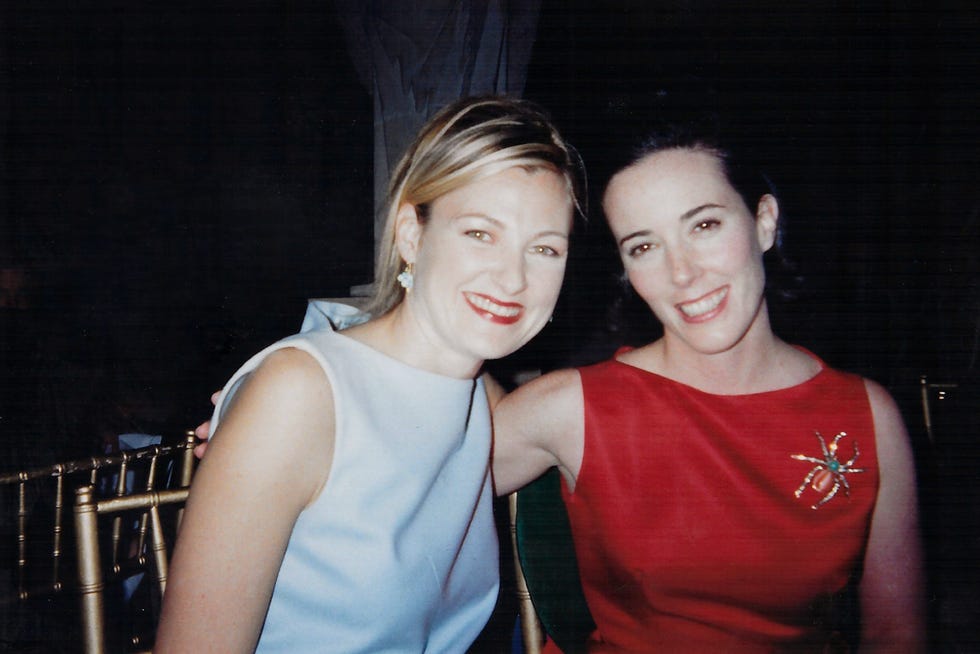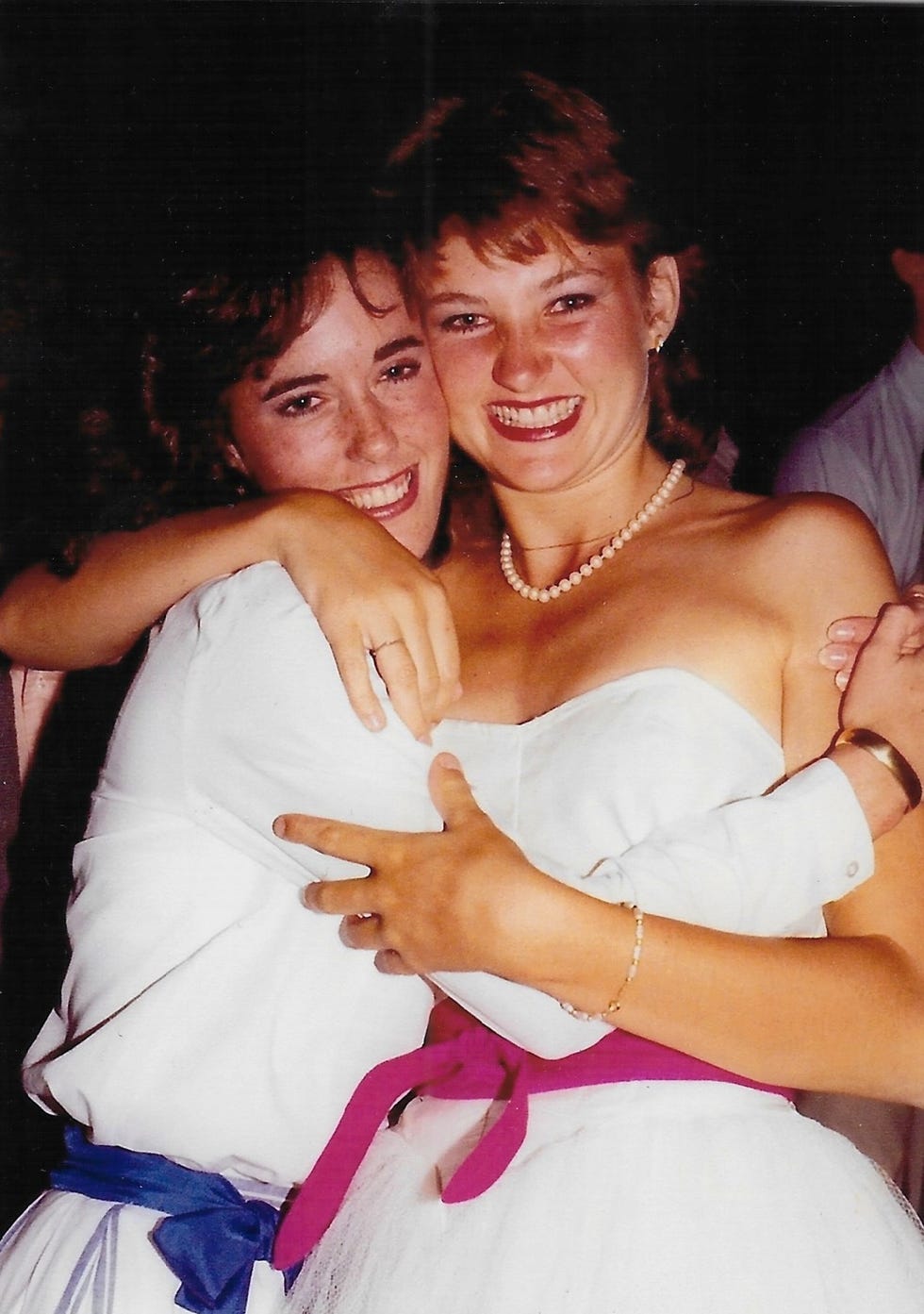What Was Kate Spade Really Like? Let Her Best Friend Tell You.

Kate Spade was one name, but there were four people behind the brand at its inception. In her new book We Might Just Make It After All: My Best Friendship with Kate Spade, co-founder Elyce Arons tells the story of starting an explosively successful company in New York City with her closest friend, then named Katy Brosnahan, and the story of losing her to suicide in 2018. When Katy Brosnahan, Arons, Andy Spade (Katy’s boyfriend at the time, whom she’d later marry), and co-founder Pamela Bell started their handbag business out of a Tribeca apartment, they decided to call it Kate Spade, a combination of Brosnahan and Spade’s names. The idea was that there was no single face of the company. In reality, Katy became a fashion celebrity, something she didn’t love.
In We Might Just Make It After All, Arons gets at the thrills of building a brand, the joy of working with Brosnahan, and all the glamour of the ’90s in New York. She’s also honest about the terror of starting a business with no experience and the surreal feeling of overnight success. It was incredibly fun and also unbelievably stressful.
“When Katy won the CFDA Award [for Accessory Designer of the Year in 1997], that was huge,” Arons recalls. “We were just screaming and celebrating in the office the same day. We were dancing around holding hands. And then the next thing, panic strikes Katy’s face. It’s like, ‘What am I going to say? What are we going to wear?’ That whole thing. It was constantly nerves and excitement at the same time.”
To write the book, Arons paged through years of calendars and mined old memories, some of which were painful. She spoke with ELLE.com about her days being broke in New York, handling the massive success of Kate Spade, and what she hopes the world remembers about Katy.

Arons and Spade.
We always wanted to have a business together in college, but all we had as far as experience goes were waitressing and bartending jobs. We always thought, “Okay, well maybe we’ll start a travel agency.” We had no experience in it, so what were we thinking? But we were 19, 20 years old.
We graduated and I moved to New York. Katy eventually made her way to New York, and we both started working in the fashion business in different roles. Then, Andy Spade and Katy called me one night and said, “Okay, we know what we’re going to do. We’re going to have a handbag company.”
For me, it was a little scary financially [to leave my full-time job]. Luckily, I had no responsibilities besides paying my rent and feeding myself. I didn’t have a pet, I didn’t have a houseplant at that point, so it seemed like the perfect time for me to be able to do it. At that age I think you’re game for new experiences and different things. So, I quit my job, and we started.
“I want to call her every day. There are so many times during the week when I just want to pick up the phone because only she would remember that time or understand.”
We worked out of their apartment on Warren Street for about two years. There was no air conditioning. The elevator, if it was on somebody else’s floor, you had to call their apartment to say, “Bring it up.” Or you’d ring and finally somebody would come with it. It was just a constant hassle. But you didn’t think about it back then. We couldn’t afford to really go to the copy shop and get copies made. So, we did a lot of stuff ourselves.
We were very scrappy with everything we did, but it was fun. At the end of the day, we would spend our money on a six-pack of Heineken and take it to our contractor, rather than go buy dinner with it. We were there until 10:00 at night. It was fun. We were so broke, but it’s almost like when you have nothing to lose, you have nothing to lose.
What was it like working with your best friend? Were there challenges?If you’re mad about something, you’re going to say the meanest thing to that person that you never would do in a professional setting with anybody else, but at the same time, we probably laughed more than we thought.
In the book you’re very honest about some of the tensions you experienced in the company. I’m sure people looked at it like you had this extraordinary growth, and you were working with your friends so things must be perfect. But what was it like to see something just skyrocket in popularity so quickly?It was unbelievable. Never in your wildest dreams could something like that happen. It’s like winning the lottery, where you just can’t believe it. Things happened incrementally over several years. It just seemed like there was always great news around the corner, something that was always happening with us, whether it was Bergdorf Goodman taking our bags, or finding some really great specialty stores around the country that Katy and I always dreamed about being in.

Spade and Arons as sorority sisters at University of Kansas.
At the beginning when Andy came up with the name, Katy said to all of us in the room, “Don’t expect me to be Kate Spade.” She never wanted to be at the forefront, but she took it on really well, and she did a great job of it. Every time before she had to make a public appearance, she was steeling herself. She got so good at it. She was really a smart person and always was very thoughtful about what she said, and she understood the brand better than anybody.
As a person she was funny and mischievous and hysterical. Everybody wanted to be her best friend. I was lucky. There [were] times when [she was] down. I’ve never felt depression before, so I couldn’t understand the depths of how she was feeling on those certain days. The next day, she could be her jubilant, funny, joyful self. I don’t think anyone who’s lost someone in that way can ever answer the why, because I don’t think there is a why. It’s a disease. And those of us who don’t have it should feel very lucky.
Was it difficult to revisit memories for the book?There were some that were difficult. Some of them were even the happiest times we had, because I can’t call her today and say, “Oh, my God, do you remember that?” I want to call her every day. There are so many times during the week when I just want to pick up the phone because only she would remember that time or understand.
What do you hope people learn about her from the book?Because she was so private, so many people didn’t get to know her. But when she was in a more intimate setting with a group of customers at a department store, those people got to see her and got to know who she really was. She was so personal and so fun, and I just think that that’s what people should remember about her, those funny, great times and the clever girl I knew and not how she left us.
This interview has been edited and condensed for clarity.
elle






